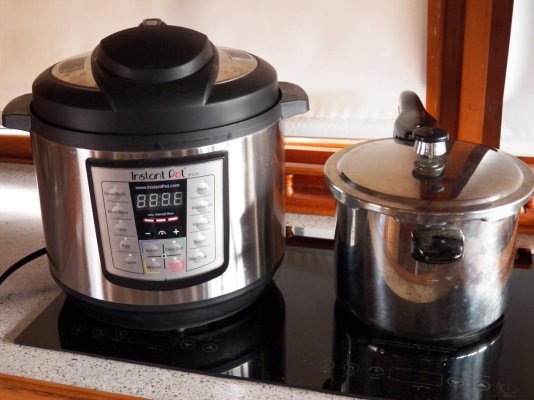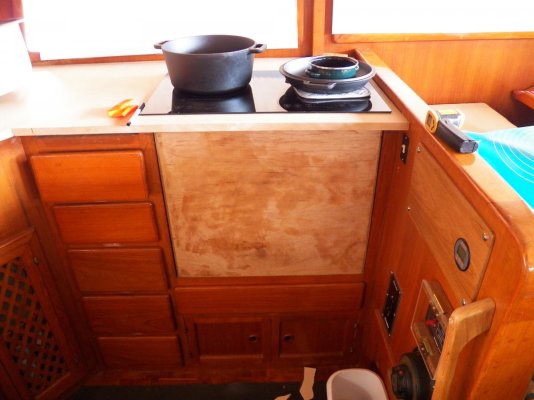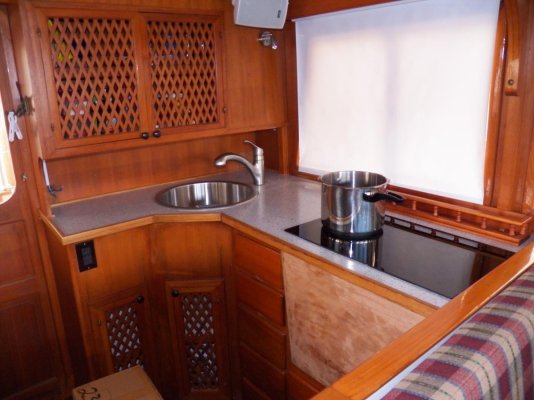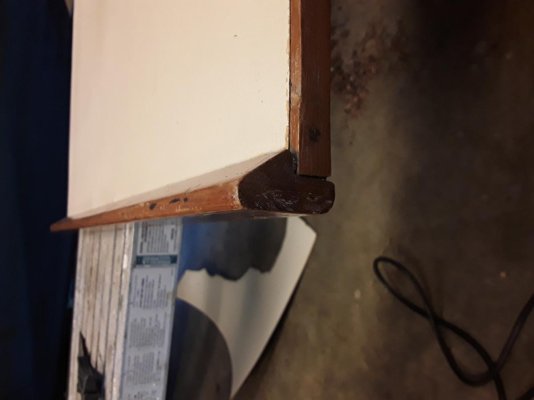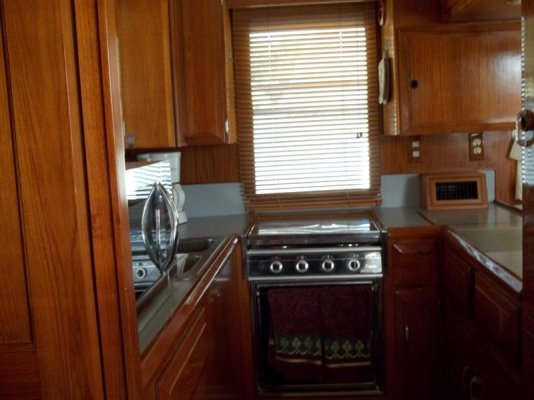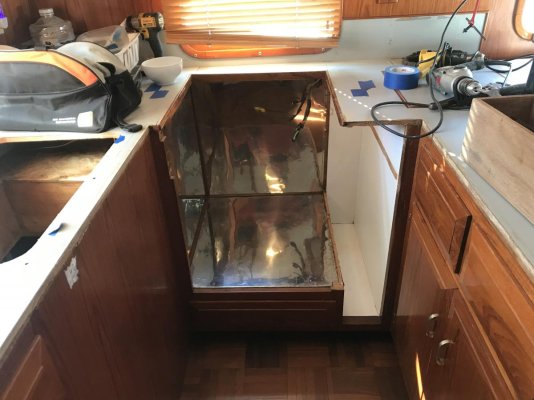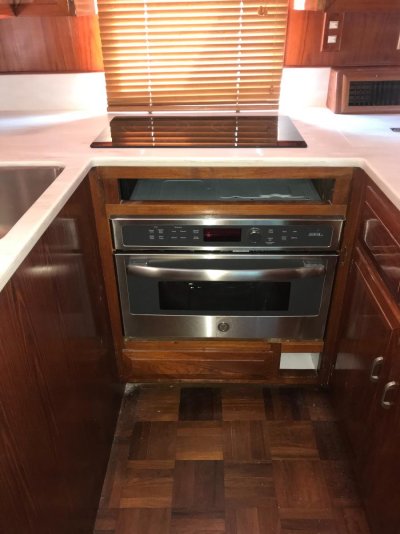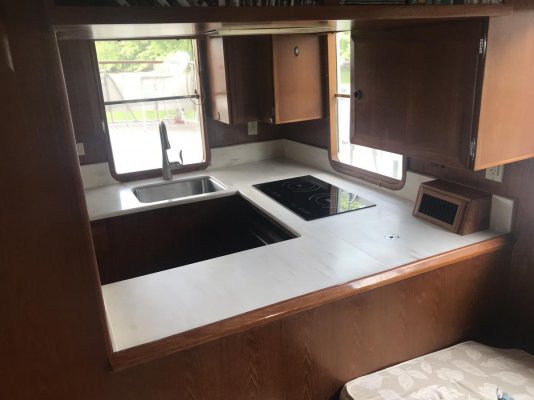Like others, we had to perform some carpentry./QUOTE]
Your picture of the original oven area reminded me of a safety feature that many boats do not have. Your oven area was lined with sheet metal (looks like stainless) that was hidden behind the oven. Good idea. I had a wood cook stove on a liveaboard that sat in a little cubby area about the same size. In the winter, I often got the stove top hot enough to glow red. But the entire area was lined with 16 gauge copper sheet which stayed cold to the touch. It conducted heat away so fast that there wasn't a hot spot.
You can see from my earlier picture that the original "air space" behind and under my oven as a protective measure wasn't enough. The wood was scorched. Copper is now real pricey, but aluminum or galvanized would do the trick. It doesn't have to be pretty, just keep the surrounding wood below its kindling temperature.
I am planning on making a similar metal lining for the area where I place my inverter. Sure, the inverter has fans that come on when it gets hot, but the failure stories where the inverter "pops," shoot sparks, and smokes makes me feel like a metal lining, like around an oven, is cheap insurance.
The metal sheet is a good conductor of excess heat, but won't protect the marine plywood sides of the cavity from the heat of the cooking appliance on the other side of it. In fact it will be almost exactly the same temperature on the side against the plywood as on the side away from the plywood.
An insulator is required, and some very good insulators are available. My own diesel stove insulation came out of the sailboat built in 1982 from which I borrowed it when swapping its diesel stove for a propane cooker and installing a new diesel stove in my trawler. It is comprised of asbestos compressed into 1/4" sheet pieces, then is covered with stainless steel panels. It insulates that very marine ply, which, on one side, separates the stove from the fridge.
Naturally, most galleys in my size of boat have the heat source positioned as close as possible to the source of cold.

